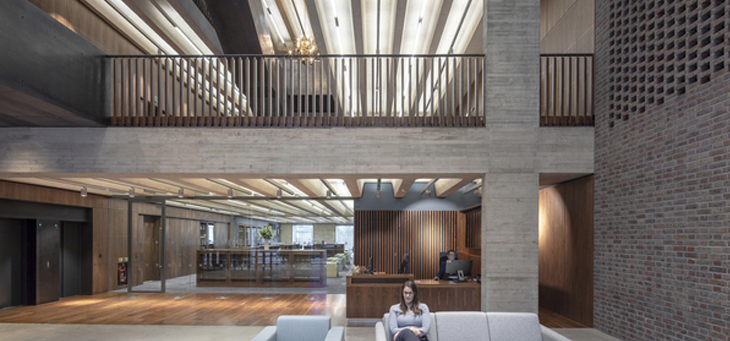Concrete Compass: Material efficiency
Navigating to useful resources and guidance

This Concrete Compass helps navigate to information related to the material efficiency of concrete and techniques in design and construction that ensure waste is minimised and concrete is used efficiently and effectively.
Key Guidance
- Material Efficiency - This document provides information on the material and resource efficiency of concrete and masonry at each stage of their manufacture, design, construction and demolition.
- Concrete Frames Explained – This publication covers the range of concrete frame options that are available so that the optimal structural solutions can be considered for each application. It includes the benefits of concrete frames and the construction methods available. It provides a comparison of different options in terms of construction times and spans that may be achieved and further guidance on developing material efficient designs.
- Economic Concrete Frame Elements - This book acts a pre-scheme design handbook for the rapid sizing and selection of reinforced concrete frame elements in multi-storey buildings designed to Eurocode 2. The handbook is intended to give designers safe, robust and useful charts and data on which to base their scheme designs.
- Post-tensioned Concrete Floors - Post-tensioning concrete offers opportunities to increase the material efficiency of concrete elements. The purpose of this publication is to widen the understanding of post-tensioned floor construction and show the considerable benefits which include minimum storey heights, rapid construction, economy, maximum design flexibility, minimum number of columns and optimum clear spans.
- Cost and Carbon: Concept V5 - Concept is a free conceptual design tool which enables designers to quickly compare embodied carbon, cost and construction time for a wide range of concrete frame options. It is intended to be used for selecting the most appropriate scheme for a concrete frame building, and to give initial member sizes. ‘Cutting carbon with Concept’ (CQ Issue 289 Winter/Spring 2025) shows through worked example the carbon savings that can be achieved through selecting more material-efficient options.
Focus on: Lowering embodied carbon of concrete structures using lean design
The versatility of concrete results in a wide range of concrete frame solutions that each play their part in reducing the quantity of materials needed to construct concrete frames. Some examples include:
Although ribbed slabs are deeper than flat slabs, the amount of concrete and reinforcement is considerably less, with a saving of about 20% in the volume of concrete and 10% in the weight of steel. This means smaller loads, resulting in slimmer columns and less extensive foundations. Ribbed slabs can also be post-tensioned, which reduces the concrete volume by a further 10%. Read more in 'Return of the Rib' article in Concrete Quarterly, summer 2019.
Post-tensioned (PT) slabs are one of the most efficient forms of construction, as they enable the two main construction materials to work in the most efficient way. Significant savings can be made in comparison with conventional reinforced concrete, equating to about 20% of the concrete and 50% of the steel in a flat slab. Read more in 'High Tension' article in, Concrete Quarterly, spring 2020.
Concrete waste is minimised during precast concrete manufacture due to efficient processes in the factory and the control of materials. As precast concrete elements and systems are typically made to order this reduces waste in production. Post-production, the robustness of the product reduces the risk of waste through damage or degradation in transport or storage. Read more in Offsite Concrete Construction.
Using concrete to make further material savings
Beyond reducing material use in the structure, concrete and masonry offers the opportunity to make further material savings throughout the building. Concrete typically does not require additional linings to meet minimum acoustic and fire performance requirement in buildings. Exposing concrete frames can avoid additional cost and carbon associated with ceilings, wall and floor finishes, as well as improving use of its inherent thermal mass.
This reduces waste and resources at installation, but can amount to significant avoidance of resource use over the life of a building given the frequency of replacement and maintenance less robust finishes require.
The use of thermal mass can also reduce or avoid the need for mechanical cooling and its associated equipment and its repair and replacement.
There are a range of The Concrete Centre guides focused on how to design concrete buildings which make the most of exposed concrete’s aesthetic and thermal mass benefits including:
 Back to Concrete Compass main page
Back to Concrete Compass main page